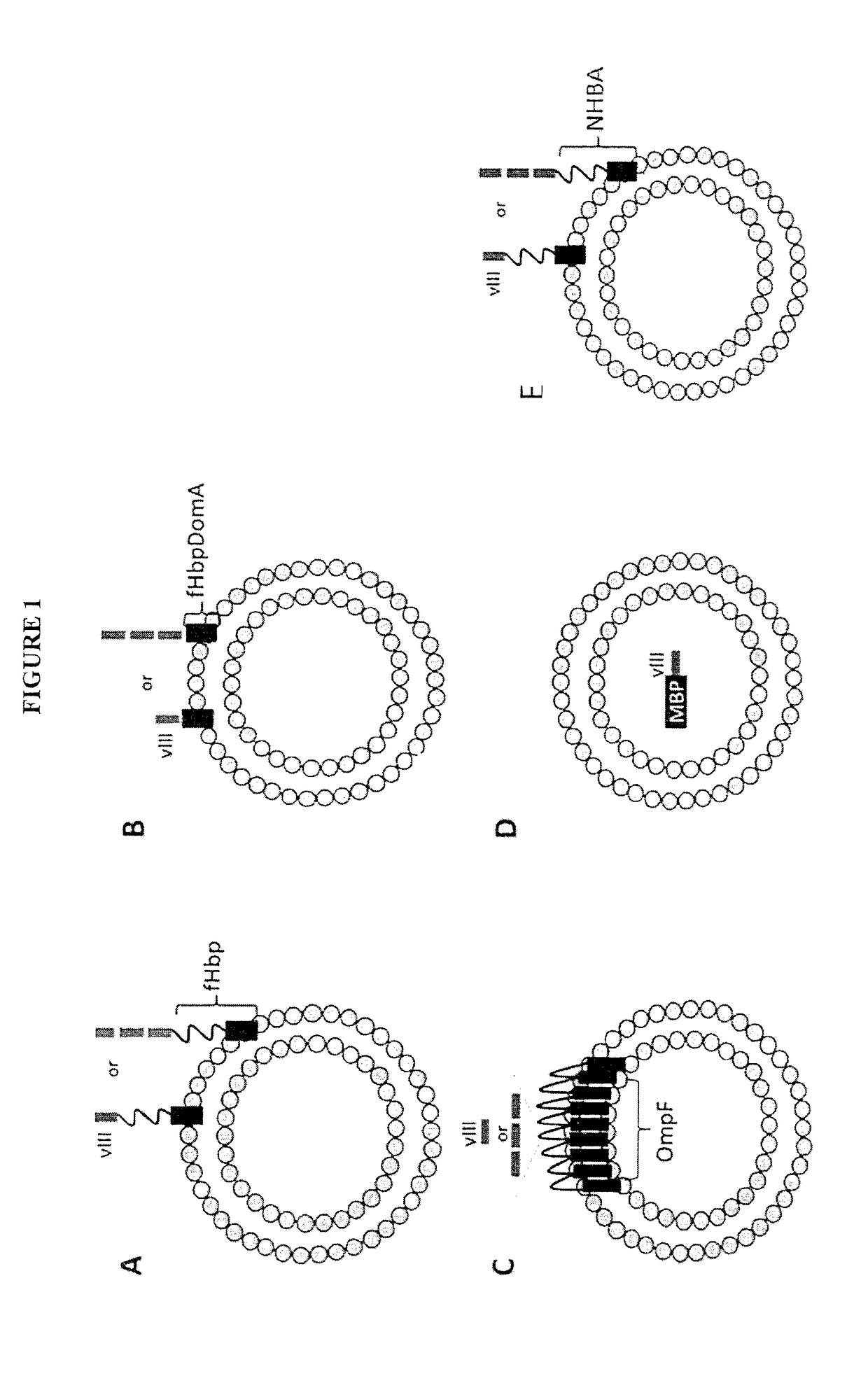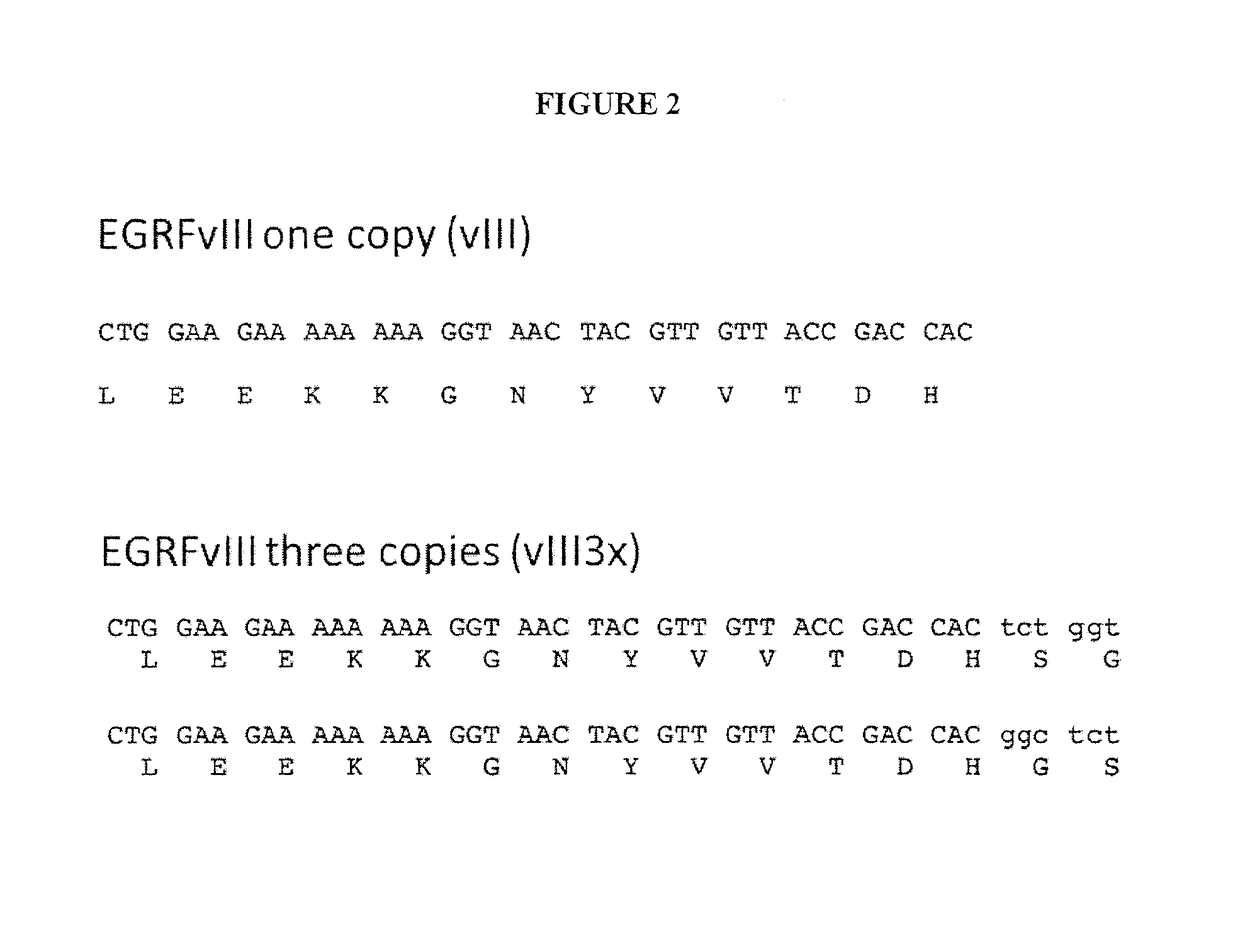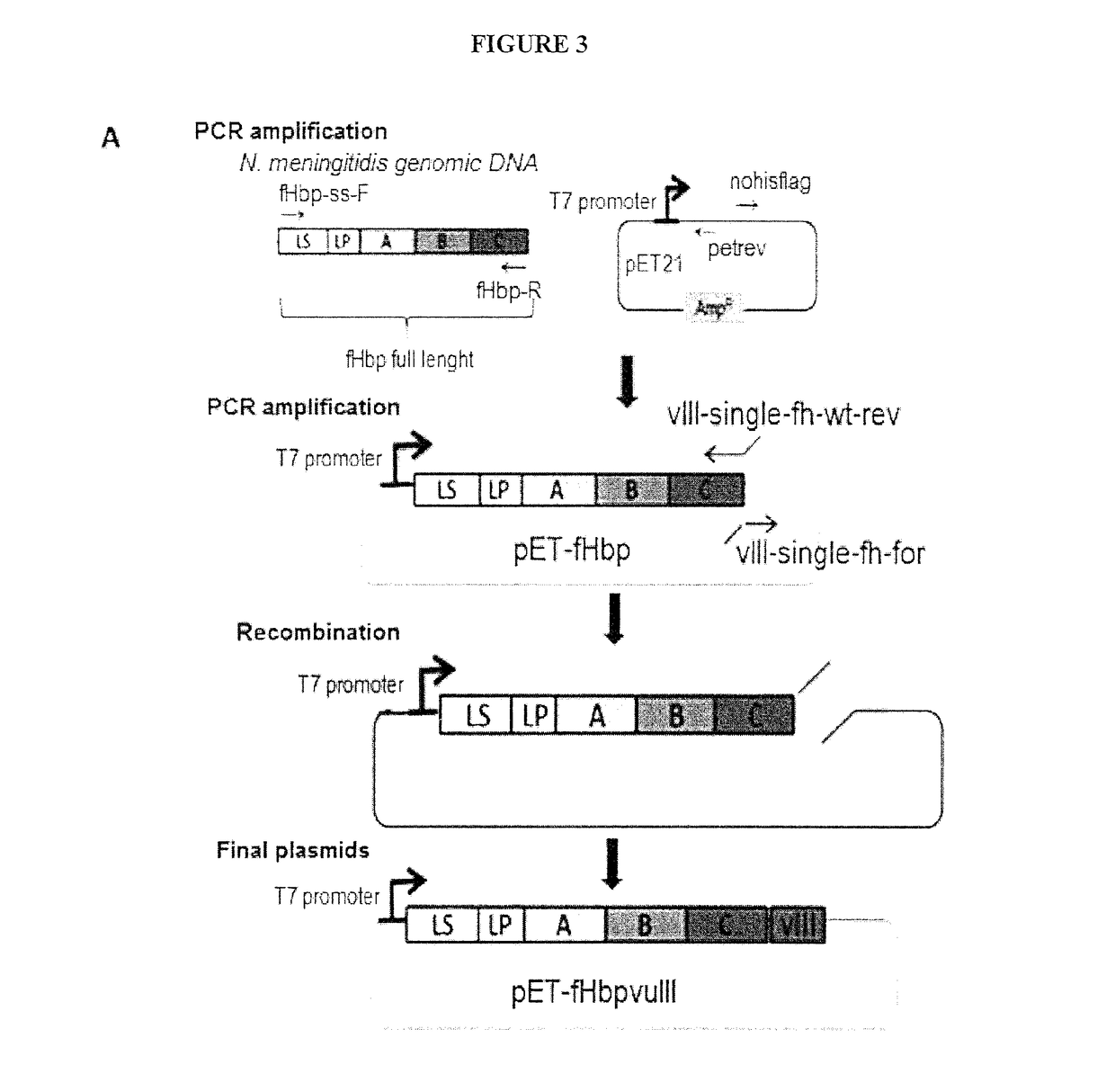Immunogenic compositions containing bacterial outer membrane vesicles and therapeutic uses thereof
a technology of outer membrane and composition, which is applied in the direction of tumor rejection antigen precursors, instruments, antibody medical ingredients, etc., can solve the problems of ineffective immune response specificity in terms of expression and elicitation of immune responses, detergent treatment favoring bacterial cell lysis, and too low amount of omv released by gram-negative bacteria under laboratory conditions to allow the exploitation of omvs in biotechnological applications, etc., to achieve efficient delivery, induce po
- Summary
- Abstract
- Description
- Claims
- Application Information
AI Technical Summary
Benefits of technology
Problems solved by technology
Method used
Image
Examples
Embodiment Construction
[0089]In one embodiment, the DNA coding sequence of a selected tumor antigen is fused to the 3′ end of the gene coding for the full length Neisseria meningitidis Factor H Binding Protein (fHbp) (SEQ ID NO:85) and such gene fusion is inserted into an appropriate plasmid expression vector in order to drive the expression of a fusion protein constituted by fHbp carrying the foreign antigen at its carboxyl terminus. Because of the presence of the fHbp leader sequence and lipidation site the fusion protein is delivered to the bacterial outer membrane and subsequently incorporated into OMVs. It was surprisingly found that tumor antigens fused to the C-terminus of fHbp are exposed to the surface of E. coli cells and of its derived OMVs.
[0090]In another embodiment, the DNA coding sequence of a selected tumor antigen is fused to the 3′ end of the gene coding for the domain A of fHbp (fHbpDomA, SEQ ID NO:86) and such gene fusion is inserted into an appropriate plasmid expression vector in ord...
PUM
| Property | Measurement | Unit |
|---|---|---|
| size | aaaaa | aaaaa |
| median time | aaaaa | aaaaa |
| volume | aaaaa | aaaaa |
Abstract
Description
Claims
Application Information
 Login to View More
Login to View More - R&D
- Intellectual Property
- Life Sciences
- Materials
- Tech Scout
- Unparalleled Data Quality
- Higher Quality Content
- 60% Fewer Hallucinations
Browse by: Latest US Patents, China's latest patents, Technical Efficacy Thesaurus, Application Domain, Technology Topic, Popular Technical Reports.
© 2025 PatSnap. All rights reserved.Legal|Privacy policy|Modern Slavery Act Transparency Statement|Sitemap|About US| Contact US: help@patsnap.com



